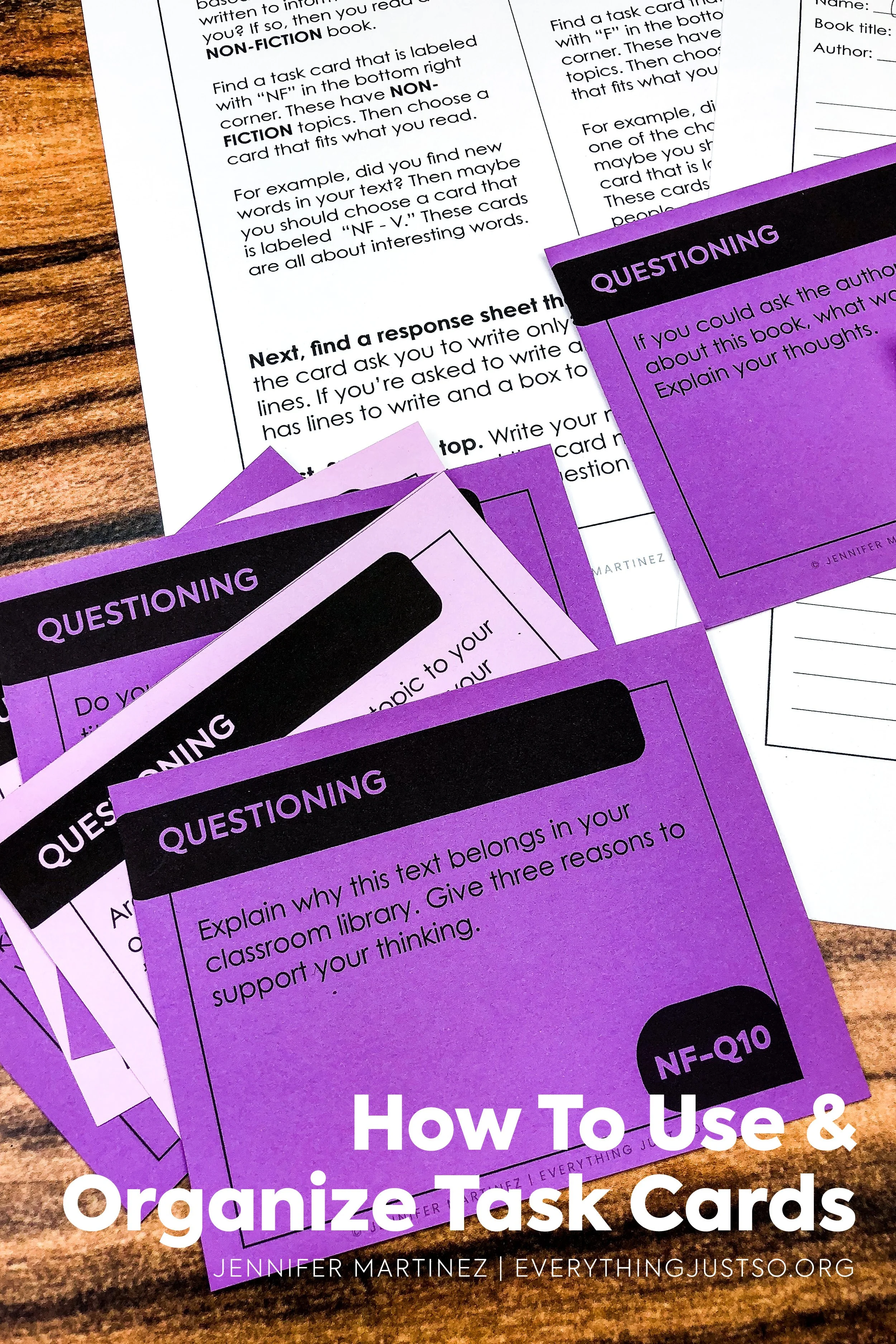How to Use and Organize Task Cards in Your Classroom
Task cards are used by teachers in classrooms across the country. They work for nearly any subject and students feel successful using them. Task cards allow for targeted practice and review and provide students with an immediate sense of accomplishment. It’s no wonder they are popular with teachers and students.
There are so many answers to the question, “Why should teachers use task cards?” First, they’re not worksheets! Task cards ask students to focus on one problem or task at a time. This makes them great for students who benefit from chunking. Task cards also allow you to differentiate quickly and easily to meet the needs of students at different levels. They are low-prep, reusable, and encourage student independence. In short, if you’re not using them, you should be! Read more about the benefits of using task cards in your classroom.
Task cards are incredibly versatile. In fact, they are so versatile that there are probably ways to use task cards you’re not familiar with. I have reading and writing task cards for 3rd, 4th, and 5th grade in my TPT store and today I’m sharing 10 ways you can put task cards to use in your classroom.
10 ways to use task cards in your classroom
1 | Centers
Task cards are the easiest center activity ever. And they’re effective, too! Simply place a set of cards in a center along with the response pages. Done!
2 | Guided reading groups
Task cards are great to use as a type of exit ticket and to wrap up the group's time together. To close out the session, simply choose one task card for group members to answer.
3 | Small group or partner review games
Students love to play games. Games are a great way to review material and prepare for upcoming assessments. Use task cards for fun and effective partner or small group review. Using the appropriate task cards, students take turns quizzing their partners or members of their group.
4 | Morning work or bell ringer activities
As students enter the classroom, have them grab a task card and complete the task in their notebooks. For a digital option, simply project the task card onto your Smartboard.
5 | Formative assessments
Use task cards as exit tickets to get a quick check on your students’ understanding of the topic or concept.
6 | Early finishers
Finding something for early finishers to do can be a challenge. Task cards are the perfect solution. Have a set of challenge cards available for students to work on when they finish early.
7 | Homework
Task cards that require reflection or longer written responses like my FREE Holiday Lights Task Cards are great to assign for homework.
8 | Question bank
Any time you need a set of questions on a particular topic, grab the relevant task cards. Perfect for game boards, review activities, partner quizzes, and more.
9 | Extension activity or summative assessment
At the end of a unit, ask students to create their own set of task cards for a classmate to complete. They’ll love this!
10 | Emergency sub resource
Save yourself - and your sub - the stress of not being prepared for an unexpected absence. Have task cards ready to go in case your sub needs filler or an extra activity.
How can I keep my task cards organized?
We’ve talked about what task cards are and why they’re beneficial. And we’ve talked about ten great ways to use them in your classroom. Now it’s time to talk about how to keep those task cards organized. Because, without a system, you risk not being able to find the right task cards at the right time and having task cards show up in all kinds of unexpected places.
There are many effective ways to organize task cards. As with all organization systems, it has to be something that works for you and is easy to maintain.
A few suggestions include:
Sort cards by subject, skill, and level.
Create a cover card or label that identifies the subject, skill, or grade level the task cards are intended for.
Punch a hole in the corner of each card and keep each set on a ring. This prevents them from getting scattered or mixed in with other, unrelated sets.
Use plastic cases and boxes. This method is popular with teachers, but it can become expensive and, if you have a large number of cards, it can take up a lot of space.
Freezer zip bags. A more cost effective solution than using plastic boxes.
Closing note…
Explore new ways to put task cards to use in your classroom. Enjoy this versatile, low-to-no prep way to engage your students and practice important skills and concepts. Don’t forget to put a system in place for organization and storage to keep task cards ready to use!
I created task cards for 3rd, 4th, and 5th grades. You can see them in my TPT store here. Preview the task cards and hear from teachers like this one who are using them in their classrooms:
“LOVE this! I have been looking for a better way to connect the reading skills to the books students are actually reading (actually want to be reading). Thank you so much!”
Want to try out a set for free? Head to The Treasury where you will find a free set of Reflection task cards that can be used with any text.




